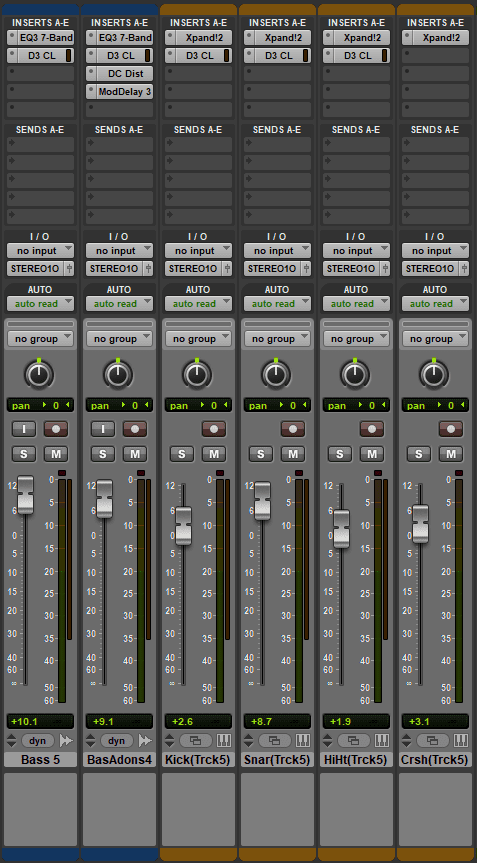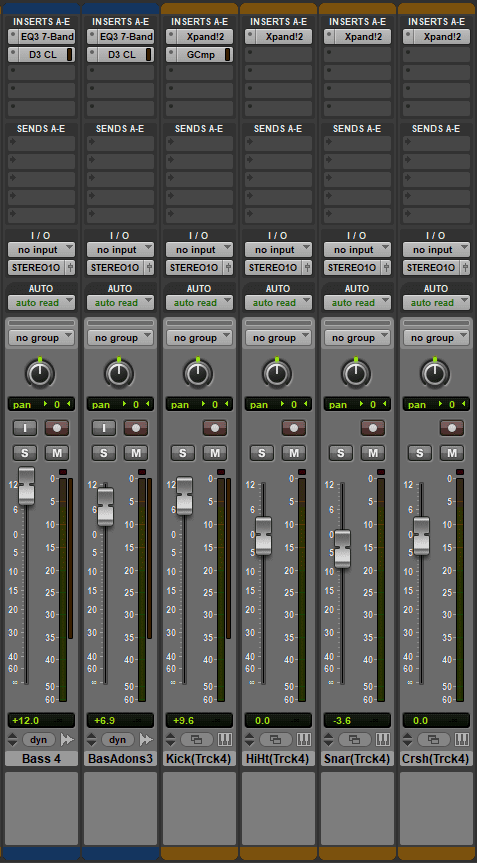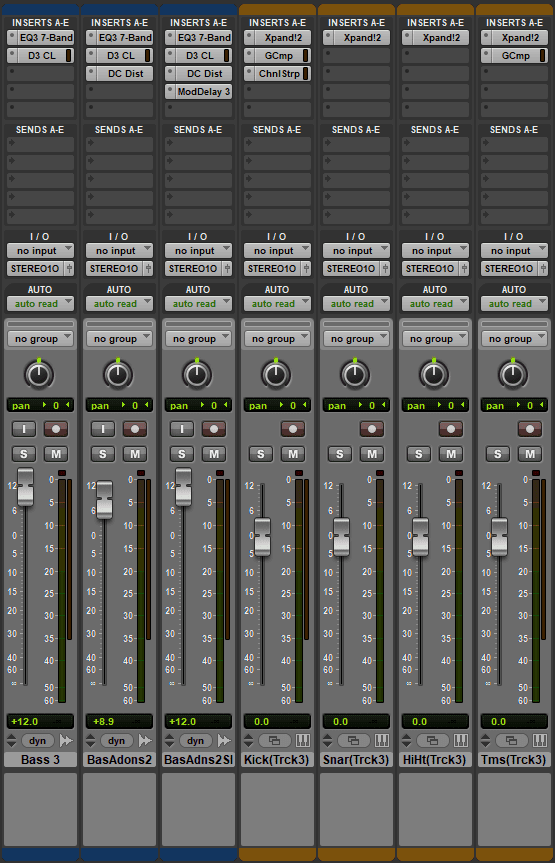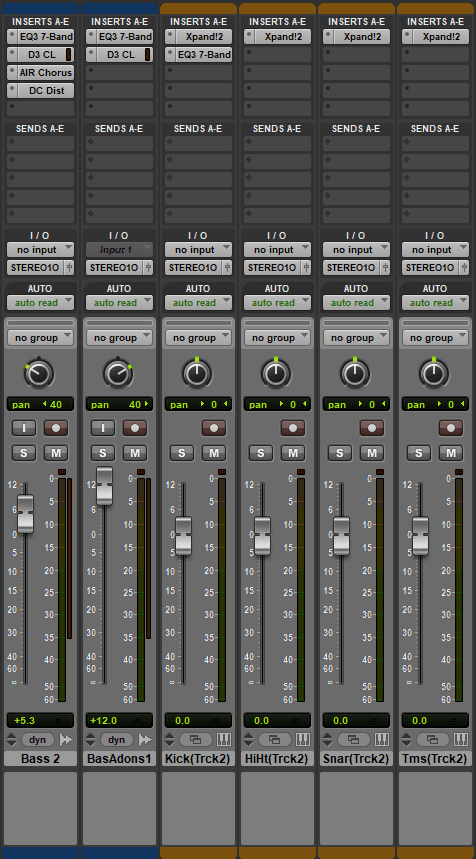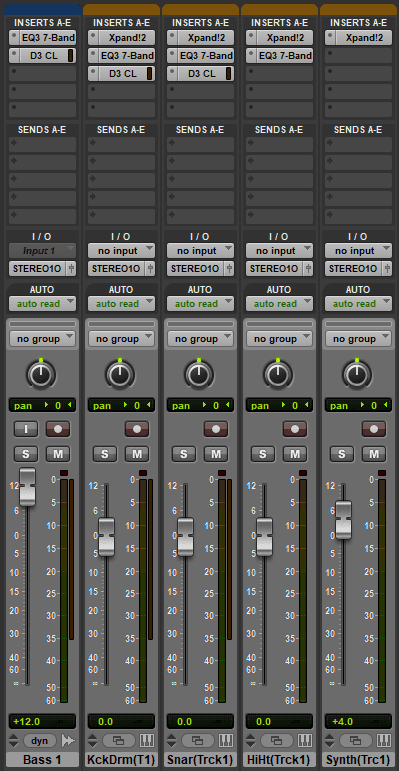The EP has been a success in regards to showcasing my skills as a performer and a producer, because of how varied each of the different songs featured on the EP are. These include a background-music song, a lounge music-inspired song, a grunge song, a jazz song, and a heavier garage rock/metal-like song, all of which feel different and sound relatively different too, even though the bass guitars are the main focal point of each one. The different uses of the bass guitar included melodies, solos and riffs, which managed to help make each song unique and interesting, allowing them to stand out in their own particular way (or, in the case of the first track, allow it to blend into the background perfectly, which was what I was aiming for with that particular song). It is safe to say that the EP, especially when planning the bass recordings and even after those had come and gone, needed a lot of time to gather steam and become a fully fledged idea, but the time was managed fairly well, which allowed me to complete all the stages at the correct time.
I believe I was able to manage my time effectively throughout the entire process in order to create this EP, especially since there was a limited time frame I had to record the bass guitar parts. I lived in Lincoln for a brief period of time after university was over, before I had to head home for the summer, and as such, I only had a few weeks to plan what I needed to do and record some bass lines in the university studio. While, yes, I managed to finish my recordings on the day before I had to go home, I did manage to book and record all 5 of my bass lines as well as extra parts for 4 out of the 5 songs. I say this because the first song on my EP – which was also the first song I recorded the bass guitar for – did not need any extra bass parts in my opinion, as it would add another instrumental ‘layer’, per say, which could have possibly taken away from the feeling I had intended for that song.
Working on this EP has allowed me to understand my strengths and weaknesses, and if I were to create another EP of a similar length, then I know what areas of the process I would change to further improve my production skills. Upon reflection, I understand that my time in the studio, while I used it efficiently and effectively, was also much shorter than expected due to the limited time-frame which I had to record the bass guitar sounds. If I had had more time, then it would’ve allowed me to use the full method of recording bass guitar (both using the DI Box and the amp+microphone combination for a larger variety of sounds) to give me a larger variety of sounds to choose from for the production and editing stages, even if I had opted never to use the sounds recorded from the amp in favour of the raw sounds recorded through the DI Box.
Balancing the workload was one of the other challenges I faced during this task, since I was much more comfortable with the practical bits of the task (the songwriting, recording, editing, mixing & mastering aspects) while the research and blog-writing parts were much tougher to do, simply because I didn’t enjoy those as much. I absolutely loved making the music overall though, because I thoroughly liked the editing, mixing and mastering processes, as well as wanting to practice recording my bass guitar on my own. These were the fun parts of the project because it allowed me to put my practical skills to the test, which is something I love doing, and record/produce songs that I would’ve only dreamed about making prior to coming to university.
In addition to this, I now understand how best to approach a project in regards to the research process. The research I conducted allowed me to discuss further details about different aspects of my inspirations, explain more of the technical details during the different stages of creating the EP, and define musical terms in a way that was easily understandable for those without a musical background. Being able to talk about the various songs I used as inspiration, such as Smells Like Teen Spirit, Smoke on the Water, Your Love is a Fine Thing and the lift music which inspired the first song, was a good way to compare the songs I made to those professionally made products, explaining why I chose them for inspiration and the sound or feeling I intended to create.
Looking back over the task I set myself, I can say that I am proud with the work I have done for this project. I feel that I have made an EP I am genuinely happy with, and I am confident that I can add these pieces of music to my portfolio to demonstrate my sequencing, editing, mixing and mastering skills on ProTools, as well as my general bass guitar playing too. I believe this to be the case because I have managed to not only create an EP with 5 tracks that mainly feature the bass guitar with accompanying sequenced elements, but I also backed up my creative decisions with research, clearly showed my inspirations for the relevant tracks, and managed my time effectively to best produce the EP.

